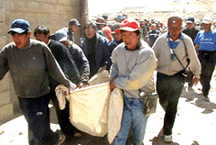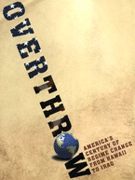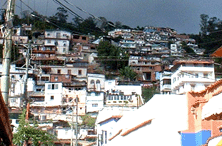
Tin War in Bolivia: Conflict Between Miners Leaves 17 Dead
October 7th was supposed to be a day of celebration for the Virgin of Rosario, the patron saint of miners. Yet events in Huanuni delayed the festival interminably.

October 7th was supposed to be a day of celebration for the Virgin of Rosario, the patron saint of miners. Yet events in Huanuni delayed the festival interminably.

The neighborhood of El 23 de Enero is like many improvised neighborhoods in Caracas clinging to the hillsides of the city; multi-colored apartments made of brick and cement were stacked on top of each other forming labyrinth-like alleyways and streets. One of many barrios in Caracas, the community was self-assembled by immigrants from the countryside, most of whom began by squatting land on the hills outside the center of the city, and assembling houses next to and on top of each other.

"Why does a strong nation strike against a weaker one?," Stephen Kinzer asks in the first line of his book Overthrow. "Usually because it seeks to impose its ideology, increase its power, or gain control of valuable resources." In this case, Kinzer is referring to the aggressive foreign policy of the United States in the last century, and specifically to the habitual, if extreme cases in which it has deposed foreign leaders in order to create a government more favorable to its own interests.

Caracas, Venezuela is a city made up of skyscrapers, colonial architecture and, wherever possible, the do-it-yourself tile and cement houses of poor neighborhoods, known as barrios. Though the local mainstream media ignored the coming of the 2006 World Social Forum, Caracans themselves found out quickly as they watched a parade of activists from across the globe pour into their city waving banners, setting up tents and discussing the state of the world on park benches and hotel lobbies.

One of the most noticeable attributes of the city of Caracas is the contrast between social landscapes. Even the highway that was until recently the main route between the airport and Caracas gave the traveller a distant view of the barrios, the Do- It-Yourself neighborhoods , labyrinths of houses piled on top of eachother, built into the hills surrounding the city. Now, with the closing of the bridge on that main highway, the new route, La Carretera Vieja, the old highway, actually, rumor has it, a route first constructed by the Spanish 400 years ago, travellers now have an even more impressive entrance to the city. After a winding climb into the mountains, busses and taxis descend precipitously into the heart of Catia , the largest barrio in Caracas and, Ben says, the largest barrio/favela/slum in Latin America. Since the road has only two-lanes, and can often only accomodate one bus at a time on the hairpin turns, traffic has been backed up for hours.
Copyright Toward Freedom 2019